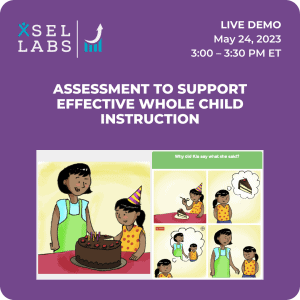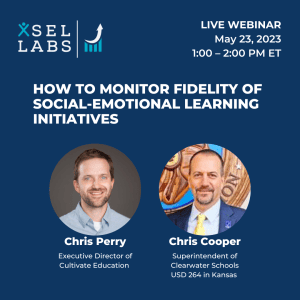Recently, I met with a team of teachers and administrators who had administered our assessment, SELweb. I thought I was there to help them make sense of the results. It turns out they had already done a lot of sense-making, and I learned a lot about how high-quality SEL assessment can change the way children are viewed and treated.
1. Validating Impressions While Challenging Assumptions
One teacher had been struggling with her fourth-grade class all year long. By her estimate, over the year, about half of her students have engaged positively during class time, and the other half struggled. Her SELweb data mirrored that impression—many students performed exceptionally well; many didn’t.
With her impressions mirrored by the results of a direct skill assessment, the teacher felt validated. Her relief was tangible. Beyond feeling validated, the assessment results also led her to conclude that her challenging students are not being willful or disobedient—at least, that’s not the whole story. Instead, the data helped her see that they need to learn to interact positively with others.
2. Shifting the Focus From Deficits to Strengths
This shift in views changed her plans for working with students. Her orientation moved from “How can I extinguish bad behavior?” to “How can I teach my students to engage positively? This will result in more supportive interactions between the teacher and the student, nurturing that student’s skills.
A second teacher looked at the individual scores of a fifth-grader who had been getting into dustups on the playground. That student had performed exceptionally well on subtests that measure social awareness and self-management but did not do as well on a subtest measuring social problem-solving.
From these results, she came to view the student differently. First, she saw that this student, often a source of frustration, has meaningful social and emotional strengths to build on. Next, she realized that he could benefit from learning some strategies for recognizing and working through everyday social conflict. Finally, we talked about how she can help this student learn the problem-solving skills that will stand him in good stead on the playground.
3. Reframing Challeging Behavior as a Teaching Opportunity
In these examples, teachers had become frustrated by students and found that their attempts to extinguish unwanted behavior were not leading to the change they sought. The assessment data helped them see the students in a new way and began thinking about teaching skills.
So SEL and its assessment can help educators reframe student behavior and move from a punitive approach focused on extinguishing unwanted behavior to a positive strategy focused on teaching skills.
Many districts struggling with discipline issues have recognized that a skill-building approach is essential in fostering positive behavior and student engagement.
Join us Friday, May 13th, for a webinar to hear about one district’s use of SEL to address disproportionate discipline referrals and move from extinguishing problems to fostering skills.



